From shock wins to dramatic comebacks: 10 of the most remarkable rises to the podium in F1 history
After Nico Hulkenberg's climb from P19 to the podium in the British Grand Prix, F1.com looks back at some of the most impressive rises to the rostrum in the sport's history.

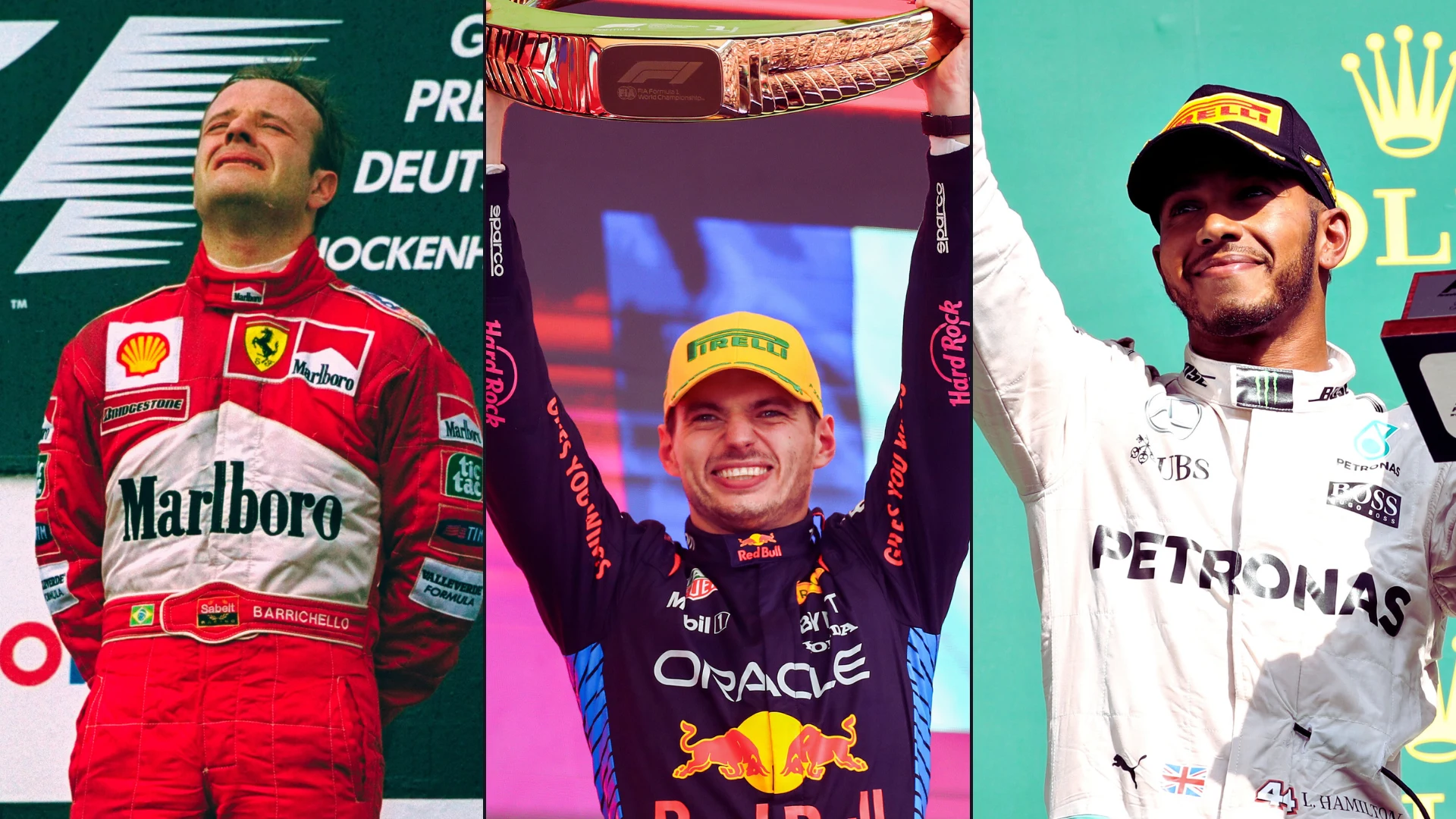
In a result that perhaps few would have predicted beforehand, Nico Hulkenberg rose from the back of the grid to third place in the British Grand Prix to seal his long-awaited first podium. The Kick Sauber man’s performance has earned its place on the list of impressive rises to the rostrum – so, to mark that, we’ve been taking a look back at 10 other remarkable drives to the podium…
Rubens Barrichello, 2000 German Grand Prix
Hulkenberg had lined up in P19 on race day at Silverstone – and Rubens Barrichello found himself in a similar position ahead of the German Grand Prix in 2000, the Brazilian ending up in P18 on the grid at Hockenheim after his car suffered electrical issues in Qualifying.
While Ferrari team mate – and championship leader – Michael Schumacher found himself out of the running on Lap 1 following a collision with Benetton’s Giancarlo Fisichella, Barrichello started to carve his way through the field in a race featuring changing weather conditions.
The driver from Sao Paulo handled the subsequent chaos of others crashing, Safety Car phases and further heavy rain to clinch his debut victory in F1, leading to emotional scenes on the podium as Barrichello tearfully processed his achievement.
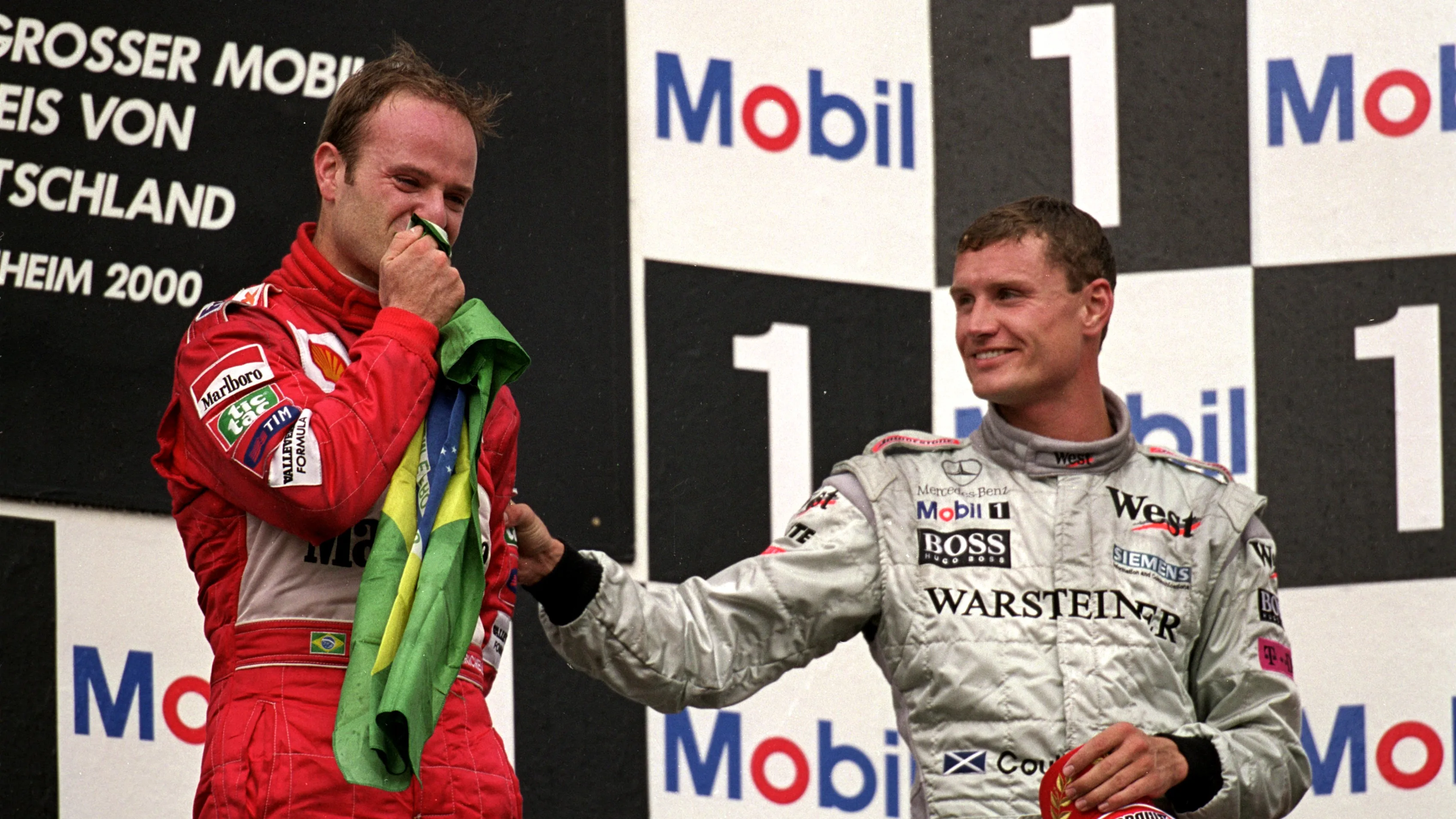
Max Verstappen, 2024 Sao Paulo Grand Prix
Barrichello went on to achieve a total of 11 victories in Formula 1 – and while none of these took place at his home race, one driver to claim a particularly memorable win in Sao Paulo is Max Verstappen, who pulled off a remarkable comeback drive at the 2024 event.
Race day in Brazil had already proven frenetic hours before the Grand Prix, with Qualifying taking place earlier on Sunday after being postponed owing to Saturday’s treacherous weather conditions.
Amid five red flags in the session after several crashes, another big shock occurred when Verstappen exited Q2 in 12th place, which then became 17th on the grid due to a five-place penalty for using a new power unit.
This did not deter the Red Bull driver, who made numerous overtakes to climb up the order during a chaotic rain-affected race – and, after taking the lead from Alpine’s Esteban Ocon just past the halfway point, the Dutchman was untouchable as he stormed to a stunning victory.
Carlos Sainz, 2019 Brazilian Grand Prix
Brazil has certainly seen its fair share of eventful races over the years, with Verstappen’s first Interlagos win some five years earlier also featuring an impressive rise through the field from his former team mate, Carlos Sainz.
After a challenging few seasons, McLaren looked to be on an upward trajectory in 2019, the team scoring a solid haul of points via their new line-up of Sainz and Lando Norris.
A decent result looked like it would be harder to come by at the penultimate round in Sao Paulo, however, with Sainz forced to start from the back of the grid following a loss of power during Saturday’s Qualifying.
Despite this, the Spaniard made a one-stop strategy work in his favour on Sunday as he powered through from P20 to cross the line in P4 – and with third-placed Lewis Hamilton later receiving a five-second penalty for a collision with Alex Albon, Sainz was promoted to third, handing him his maiden top-three result as well as marking McLaren’s first podium finish since 2014.
Ayrton Senna, 1984 Monaco Grand Prix
Needless to say, there were countless moments of Ayrton Senna brilliance across his career in Formula 1 – and one of these occurred early on for the Brazilian as F1 hit the streets of Monaco during his debut campaign in 1984.
In his fifth Grand Prix start – and first at a street circuit – Senna had put his Toleman in P13 on the grid and went on to display his skill at driving in the wet during a race that saw others struggle in the damp conditions.
His progression through the field saw him work his way up to P2 behind future title rival Alain Prost, the Frenchman leading at the wheel of his McLaren.
Senna went on to pass Prost, but the decision was then taken to stop the race owing to the conditions, with the countback placing Senna in second place at the final order. While he had to wait a little longer for his debut victory, the future World Champion had well and truly made his mark with his storming drive.
Sergio Perez, 2020 Sakhir Grand Prix
When F1 raced in Sakhir for the penultimate round of the 2020 campaign, Sergio Perez was facing an uncertain future amid the news that the Mexican would be replaced at Racing Point – soon to be known as Aston Martin – by Sebastian Vettel in 2021.
As he searched for a new team, Perez had put in some good performances through 2020 including a second place in Turkey, but his prospects in Sakhir did not initially appear so promising after a collision with Ferrari’s Charles Leclerc on Lap 1 dropped him to the back of the pack.
However, Perez was a man on the move throughout the ensuing race, climbing the order before later benefitting from the misfortunes of Mercedes up ahead to surge into the lead and grab his first-ever F1 victory.
The Mexican admitted to being left “speechless” by the result, which came on his 190th Grand Prix start – and it seemed to be enough to prove to Red Bull that Perez was deserving of a drive, the team announcing within a matter of weeks that they had signed him for 2021.
Lewis Hamilton, 2016 Belgian Grand Prix
Lewis Hamilton has put in more than one impressive recovery drive during his glittering F1 career to date – and one of the most memorable came at the Belgian Grand Prix in 2016, a year famed for the Briton’s fierce title fight with Mercedes team mate Nico Rosberg.
Hamilton arrived into the weekend as the championship leader, 19 points clear of Rosberg, but a number of grid penalties for changing engine components meant that the British driver would start the race at Spa-Francorchamps from the back.
Drama for some of the frontrunners on the opening lap allowed Hamilton to move up to P15, and from there onwards he stayed out of trouble and handled subsequent Safety Car phases and a red flag to cross the line in third place.
Alongside the fact that this damage limitation allowed Hamilton to maintain his championship lead, the World Champion also notched up the unique statistic of becoming the first driver to have taken a podium from 20th on the grid or lower on three occasions.
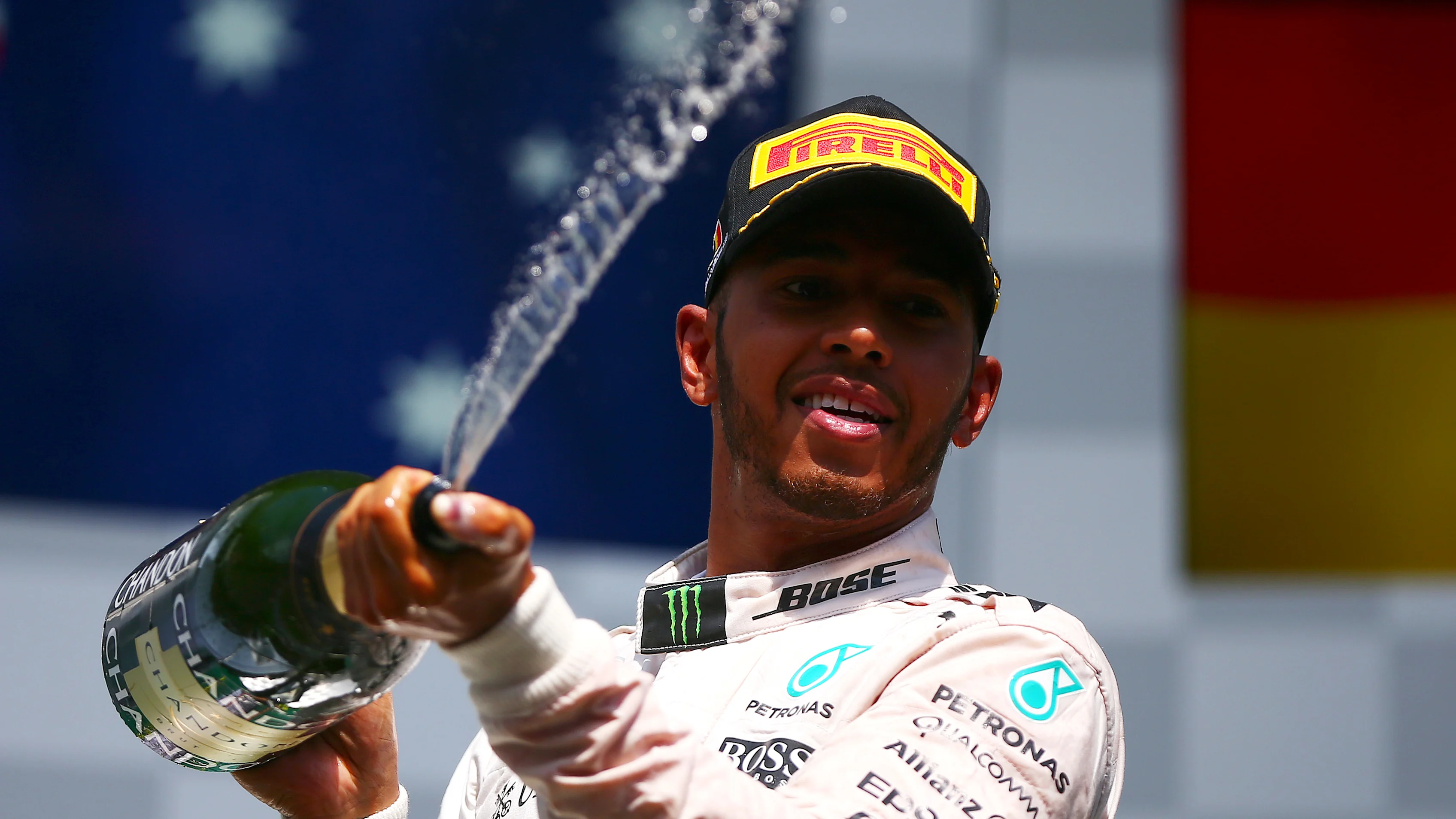
Jenson Button, 2011 Canadian Grand Prix
When it comes to dramatic events in the sport's history, the Canadian Grand Prix in 2011 has well and truly earned its place in F1 lore.
As well as becoming the longest Formula 1 race ever – at four hours, four minutes and 39 seconds, to be exact – it was made all the more memorable by Jenson Button bouncing back from numerous incidents to seal an against-the-odds victory.
After an early clash with McLaren team mate Lewis Hamilton dropped him backwards, Button’s afternoon went on to feature everything from a puncture to a drive-through penalty – just one of his six visits to the pits – and a last lap overtake for the lead on Sebastian Vettel to secure an incredible victory.
“It felt like I spent more time in the pits than on the pit straights,” Button joked afterwards as he reflected back on his extraordinary comeback drive.
Jim Clark, 1967 Italian Grand Prix
Having already achieved two wins during the 1967 season, Jim Clark looked on course to add to this tally when he secured pole position for the ninth round of the campaign at Monza.
The Briton held the lead as the race got underway, but a puncture on Lap 12 saw him drop one lap behind the rest of the field – resulting in the two-time World Champion embarking on a remarkable fightback.
After picking off numerous cars, Clark had hauled himself back into P1 with eight laps remaining. But the Scot’s victory chances were again dashed when his Lotus experienced a fuel issue on the final tour, meaning that he was passed by John Surtees and Jack Brabham.
Despite this, Clark still held onto third place in a drive that has been revered by many as one of his greatest.

Sebastian Vettel, 2012 Abu Dhabi Grand Prix
The 2012 season was a highly competitive one, with a different driver each taking victory across the opening seven rounds of the year.
Reigning champion Sebastian Vettel had embarked on a strong run in the second half of the campaign, the Red Bull driver having won four consecutive races when F1 arrived in Abu Dhabi for the third to last round of the season.
But when officials had been unable to take a fuel sample from his car post-Qualifying, Vettel – who was by this point engaged in a close title fight with Ferrari’s Fernando Alonso – was excluded from the results and started the race from the pit lane.
An eventful afternoon followed for the German driver, who recovered from front wing damage early on to pull off a series of overtakes on his rivals. This culminated in a daring move on Jenson Button’s McLaren, securing Vettel a stunning podium result in P3 en route to winning his third World Championship at the end of the year.
John Watson, 1983 United States Grand Prix West
This list would simply not be complete without a mention of John Watson’s history-making win at the Long Beach Street Circuit in 1983.
Qualifying had not gone well for Watson and his McLaren team mate Niki Lauda, the pair finding themselves down in P22 and P23 respectively after tyre struggles during the session.
However, the picture looked very different on race day, with Watson and Lauda both carving their way through the pack to eventually find themselves running in a 1-2 formation.
As Lauda was affected by leg cramps during the latter stages, the Austrian was unable to challenge his team mate and Watson crossed the line to take the win some 27 seconds clear. Having started down in 22nd place, the Northern Irishman continues to hold the record for the lowest grid slot that a win has been taken from.
Next Up
Related Articles
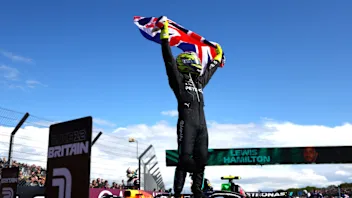 Quiz10 quiz questions on British F1 World Champions
Quiz10 quiz questions on British F1 World Champions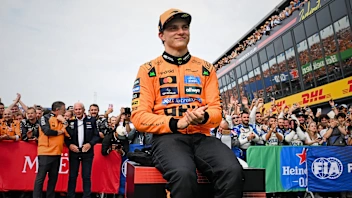 Hinchcliffe'History shows Piastri will be even better in 2026'
Hinchcliffe'History shows Piastri will be even better in 2026'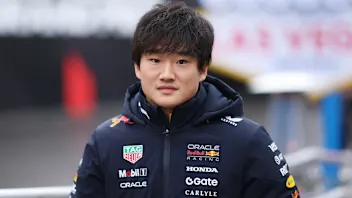 Mekies on ‘very difficult’ decision to demote Tsunoda
Mekies on ‘very difficult’ decision to demote Tsunoda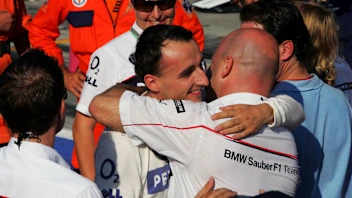 Sauber’s best moments and most memorable liveries in F1
Sauber’s best moments and most memorable liveries in F1.webp) End Of Year Reports 2025Kick Sauber’s best and worst moments from 2025
End Of Year Reports 2025Kick Sauber’s best and worst moments from 2025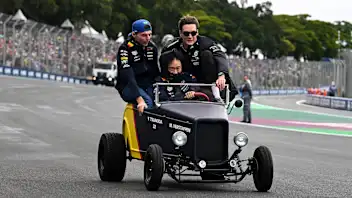 Best radio and more – F1's 2025 alternative awards
Best radio and more – F1's 2025 alternative awards